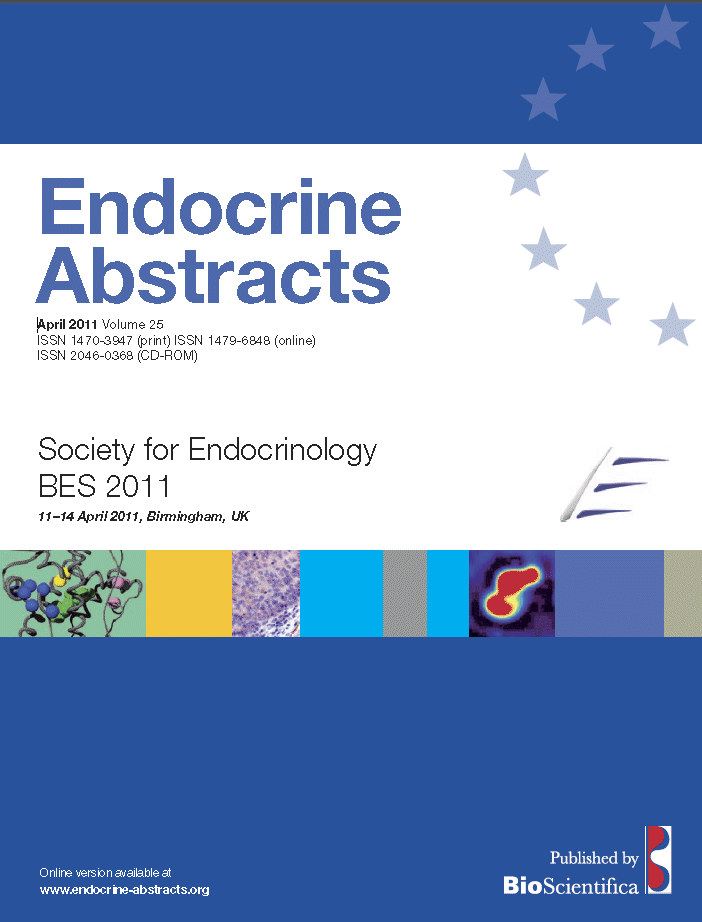Oral Communications
Reproduction and fetal programming
ea0025oc5.1 | Reproduction and fetal programming | SFEBES2011
The effect of a maternal low protein diet on renal development and function in the offspring
Lloyd Louise , Rhodes Philip , Rhind Stuart , Gardner David
ea0025oc5.2 | Reproduction and fetal programming | SFEBES2011
Maternal low protein diet and fetal growth restriction: new insights into the role of placental 11β-hydroxysteroid dehydrogenase-2
Cottrell Elizabeth , Holmes Megan , Seckl Jonathan
ea0025oc5.3 | Reproduction and fetal programming | SFEBES2011
Mutations in the gene encoding the fibroblast growth factor 8 (FGF8) are associated with complex midline defects including recessive holoprosencephaly and hypothalamo-pituitary dysfunction
McCabe Mark , Gaston-Massuet Carles , Tziaferi Vaitsa , Gregory Louise , Alatzoglou Kyriaki , Signore Massimo , Farooqi Sadaf , Raza Jamal , Walker Joanna , Kavanaugh Scott , Tsai Pei-San , Pitteloud Nelly , Martinez-Barbera Juan-Pedro , Dattani Mehul
ea0025oc5.4 | Reproduction and fetal programming | SFEBES2011
Impaired cardiac function in GR−/− fetal mice
Rog-Zielinska Eva , Thomson Adrian , Moran Carmel , Brownstein David , Kenyon Christopher , Michailidou Zoi , Szumska Dorota , Bhattacharya Shoumo , Richardson Jennifer , Owen Elizabeth , Watt Alistair , Forrester Lesley , Holmes Megan , Chapman Karen
ea0025oc5.5 | Reproduction and fetal programming | SFEBES2011
Absence of 11β-HSD2 specifically within the fetal brain alters adult ‘depressive' behaviour
Wyrwoll Caitlin , Seckl Jonathan , Holmes Megan
ea0025oc5.6 | Reproduction and fetal programming | SFEBES2011
Consequence of embryonic exposure to 17β-estradiol on brain asymmetry development and neuroendocrine gene expression in Danio rerio
Pope Madeleine , Lambertucci-Bonnett Julien , McGonnell Imelda , Fowkes Robert , Russell Claire
ea0025oc5.7 | Reproduction and fetal programming | SFEBES2011
Plasma biomarkers for early prediction of preeclampsia
Carty David , Anderson Lesley , Mcculloch Jim , Dominiczak Anna , Delles Christian
ea0025oc5.8 | Reproduction and fetal programming | SFEBES2011
Altered fetoplacental growth in monocarboxylate transporter 8 (Mct8) knockout mice
Vasilopoulou Elisavet , Heuer Heike , Trajkovic Marija , Loubiere Laurence , McCabe Christopher , Franklyn Jayne , Kilby Mark , Chan Shiao




